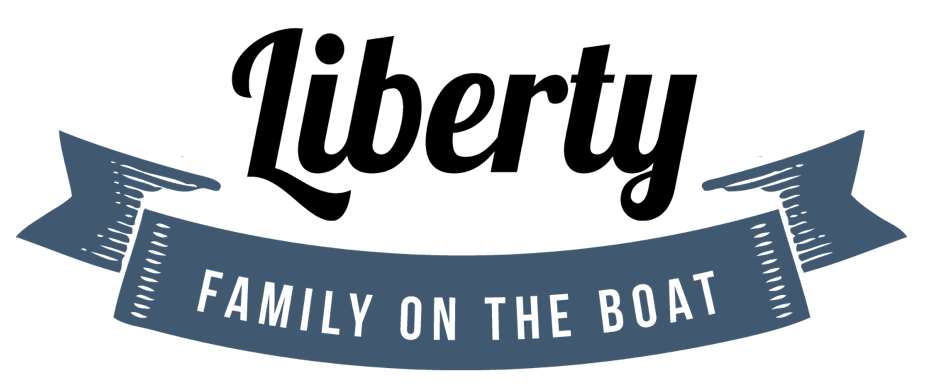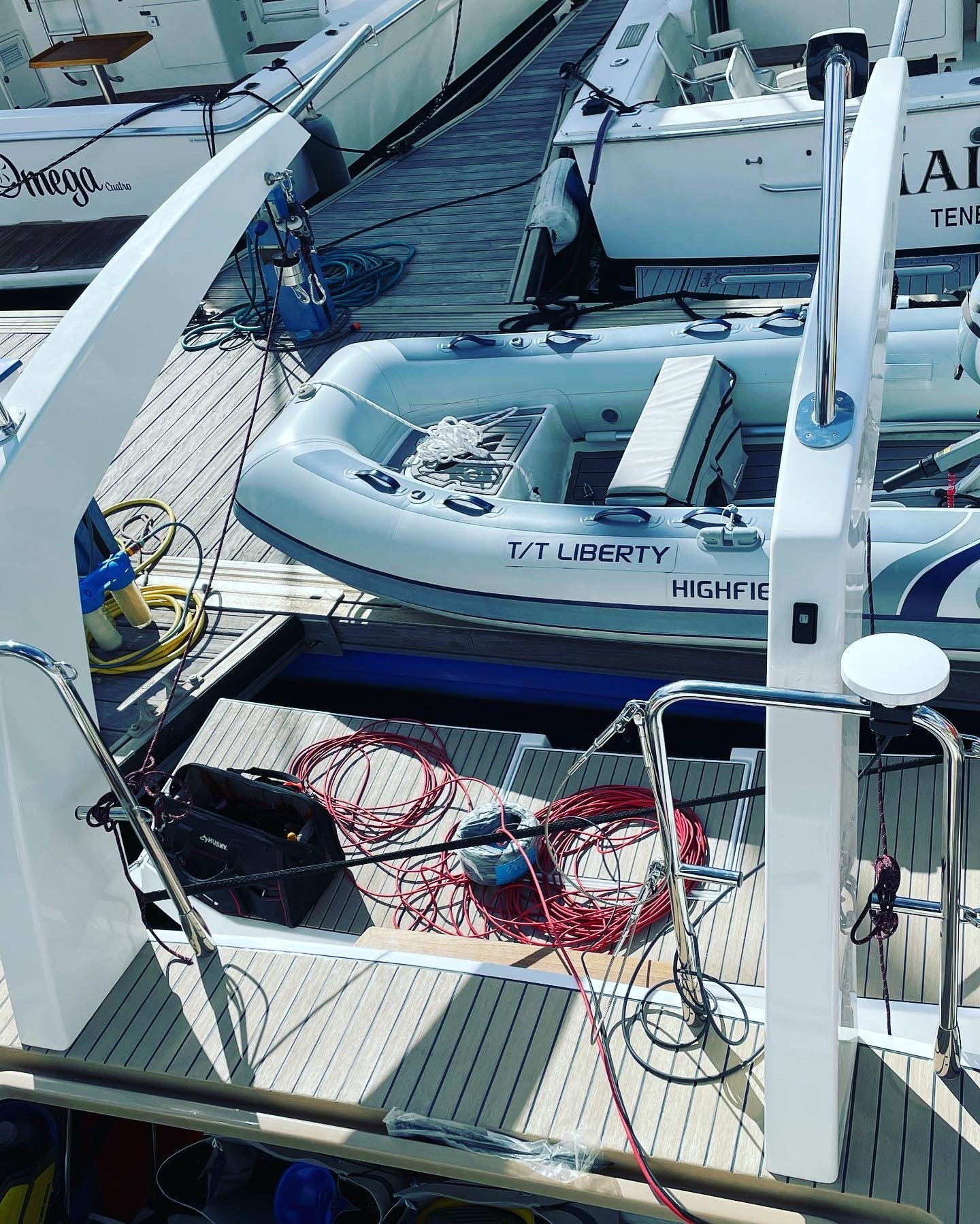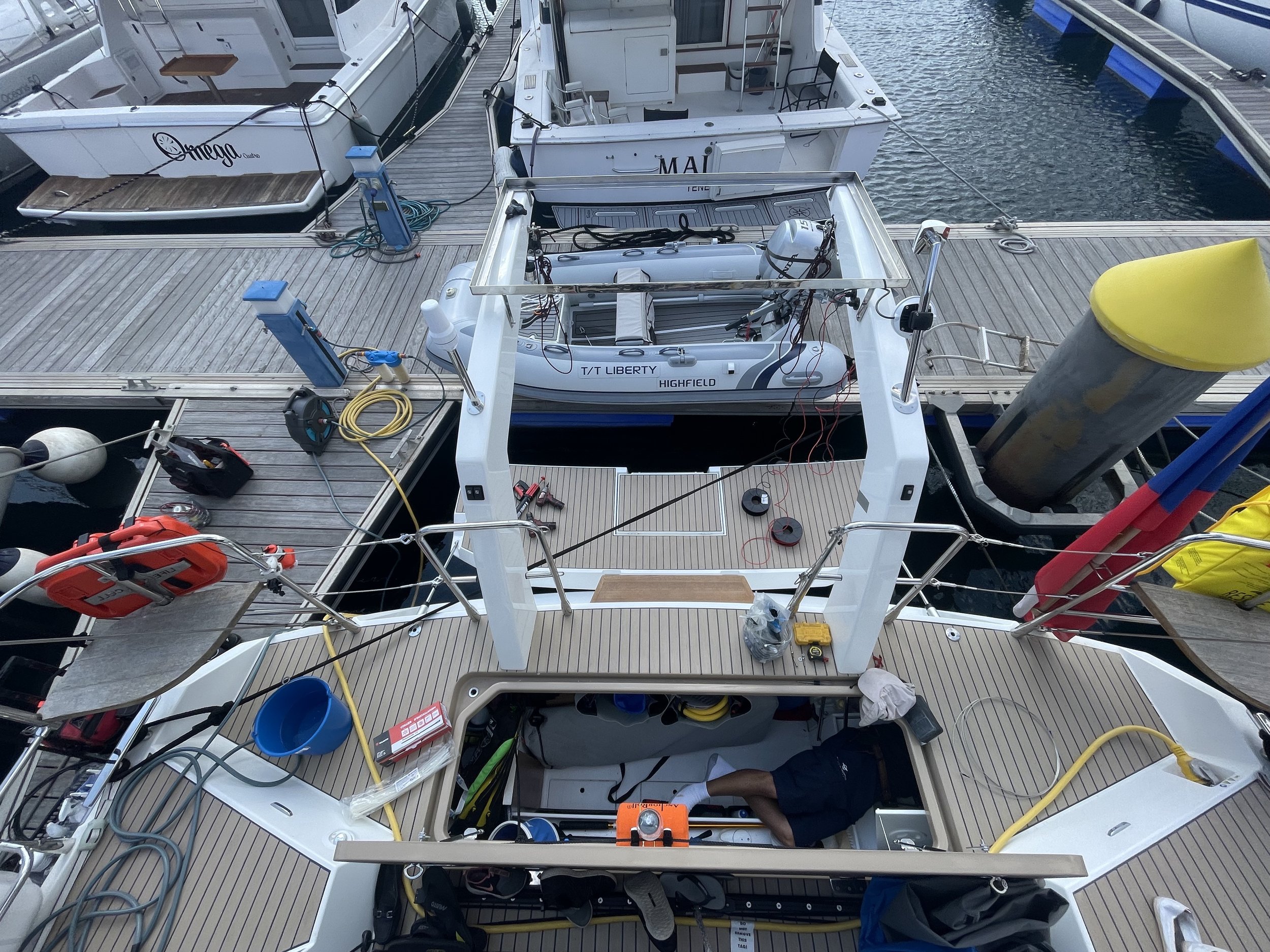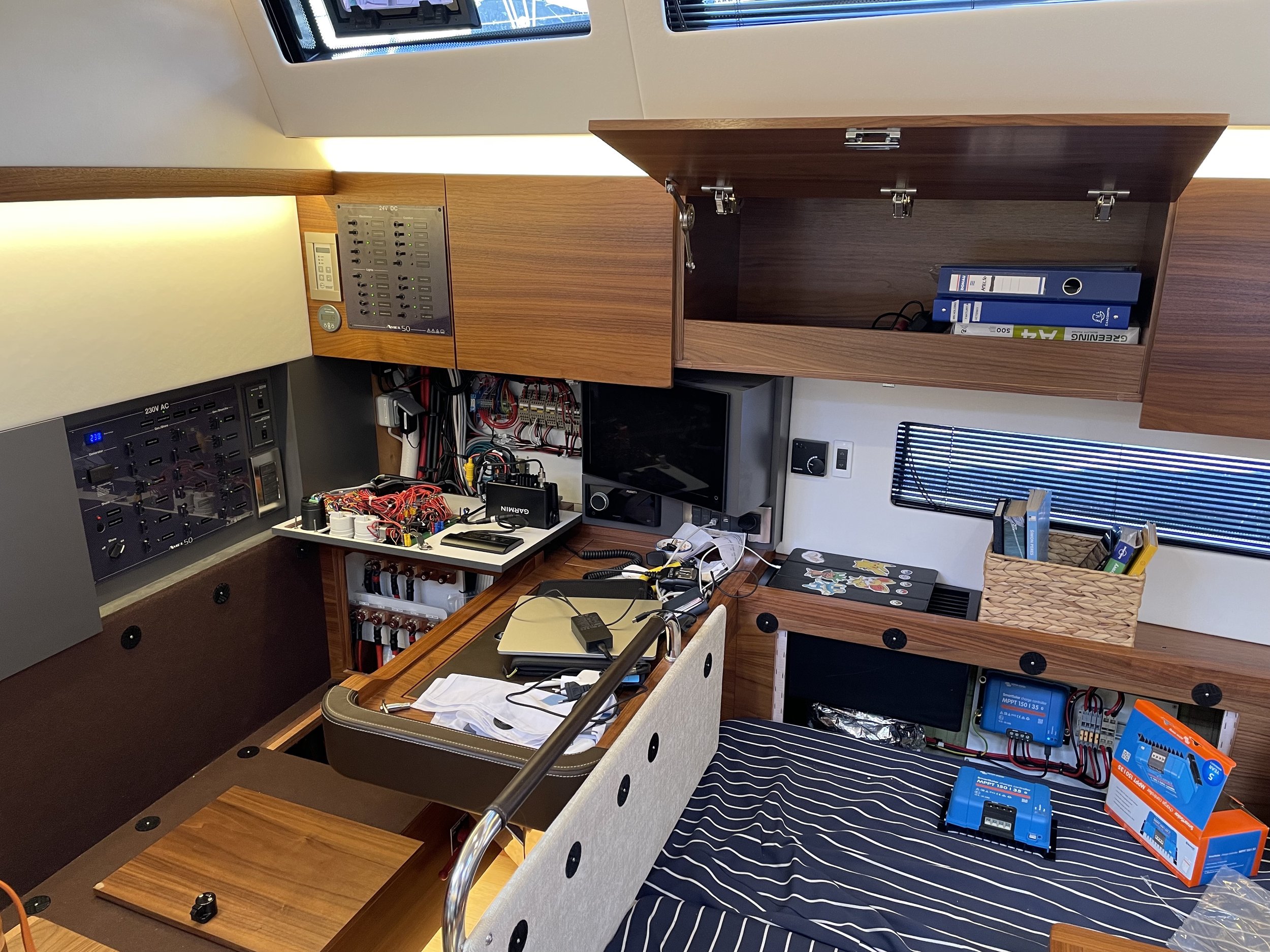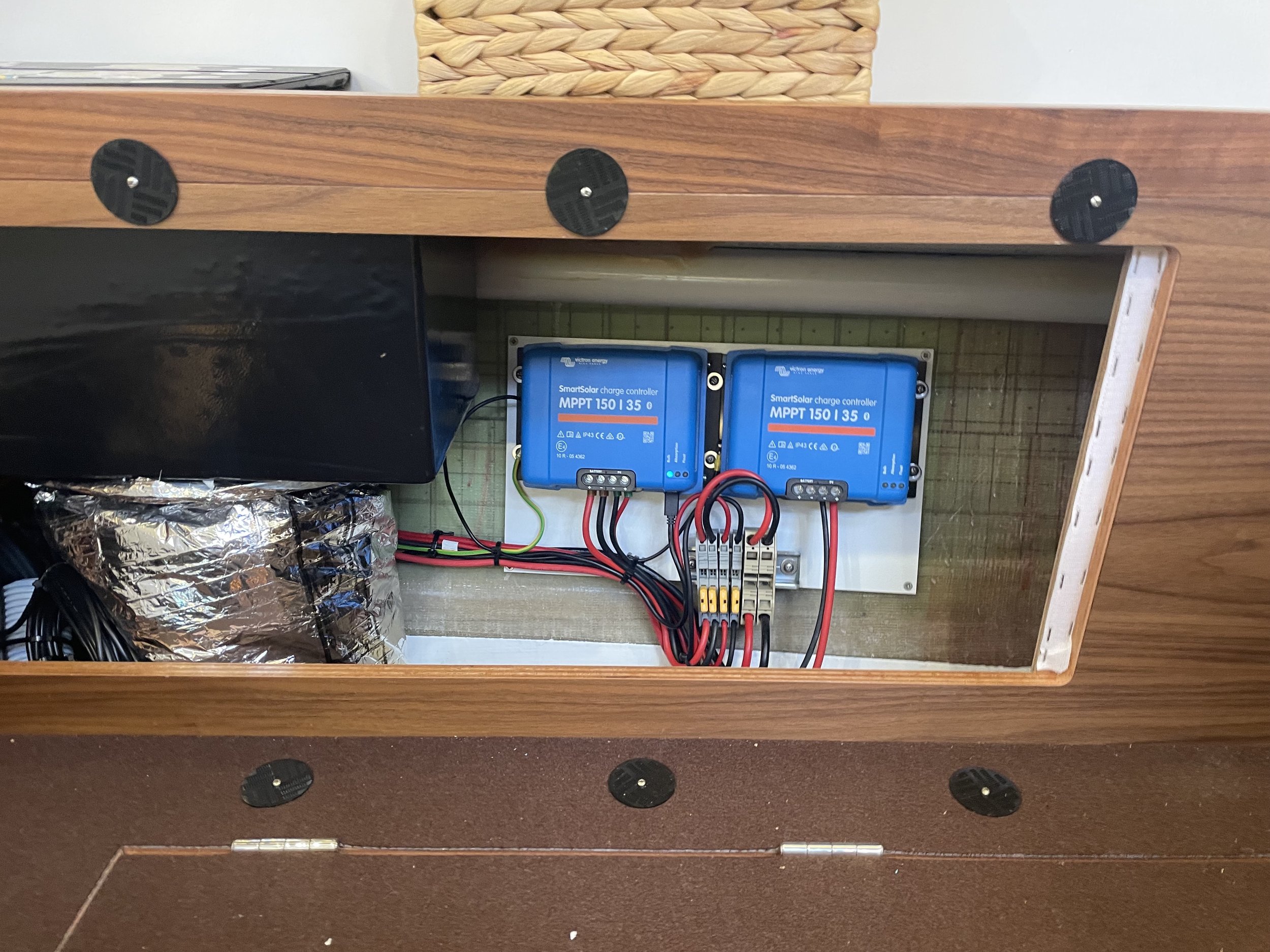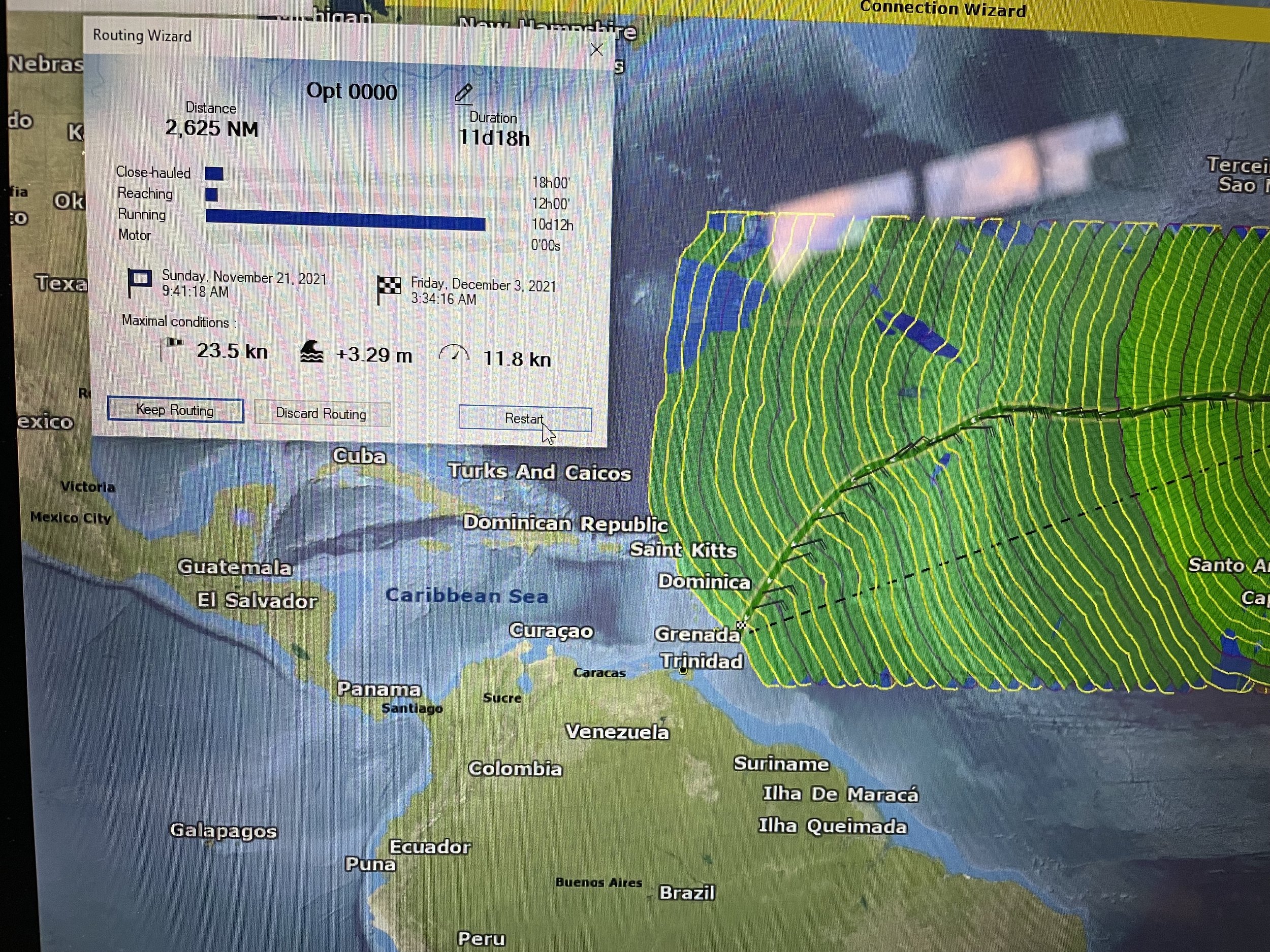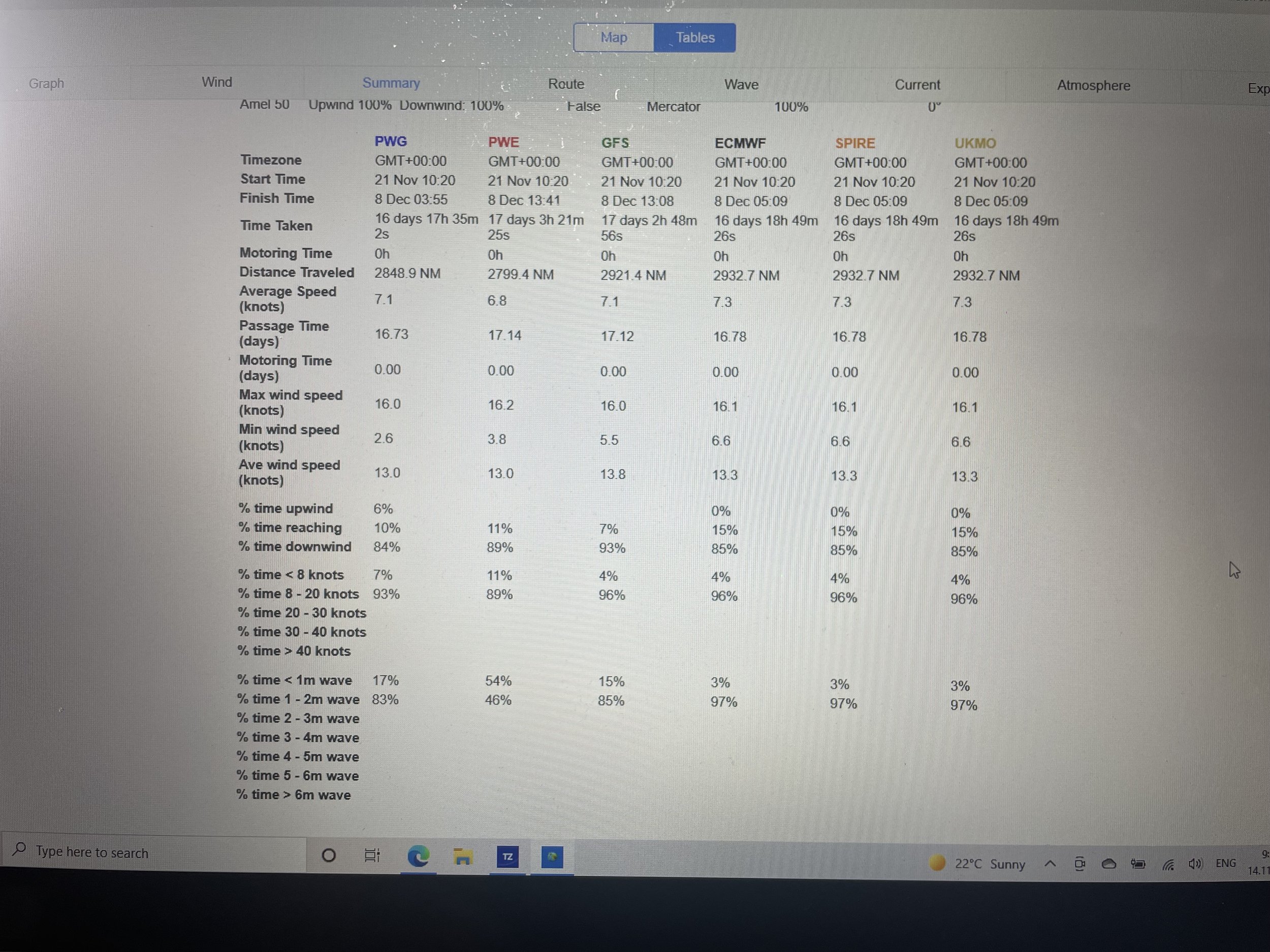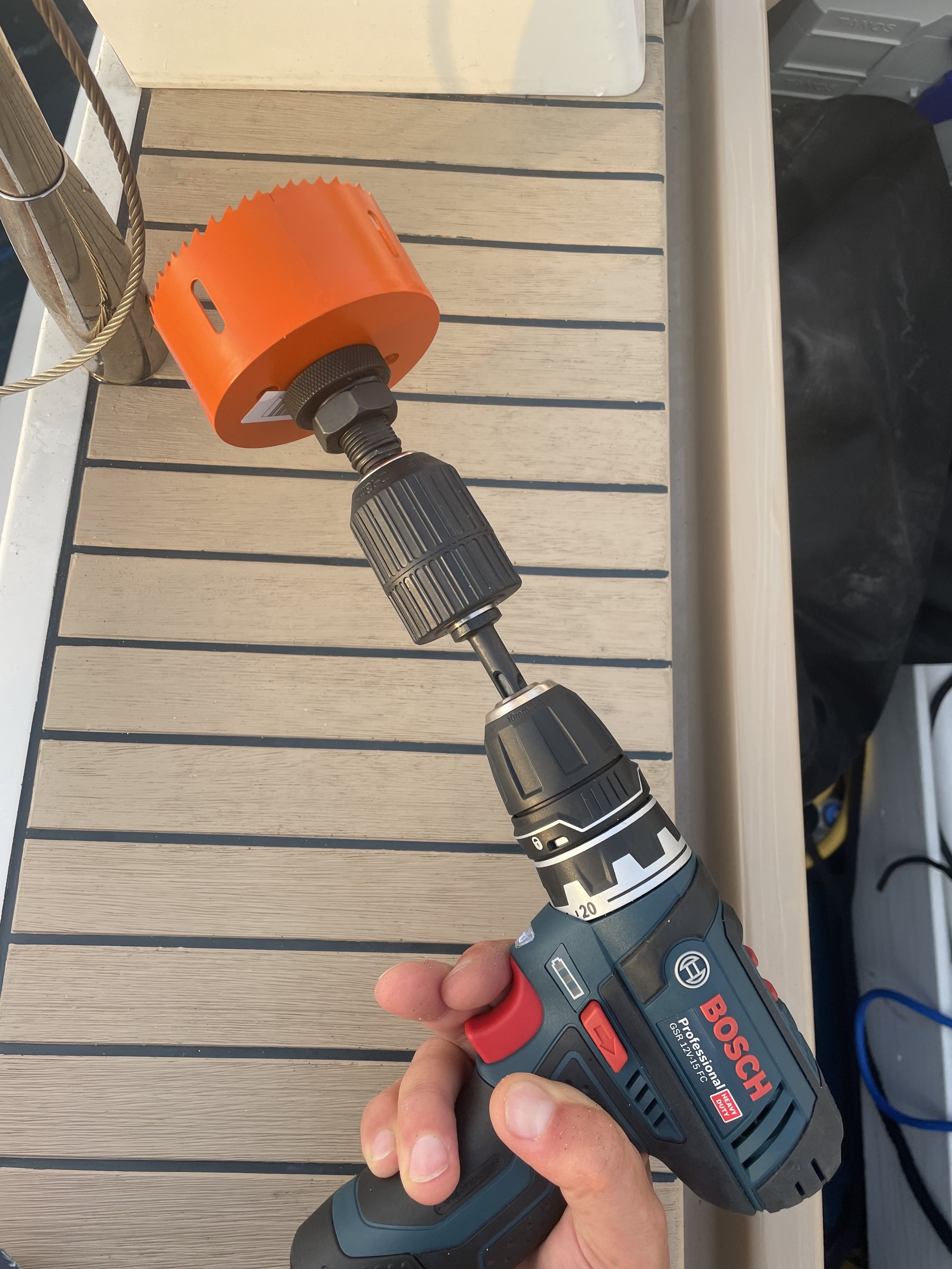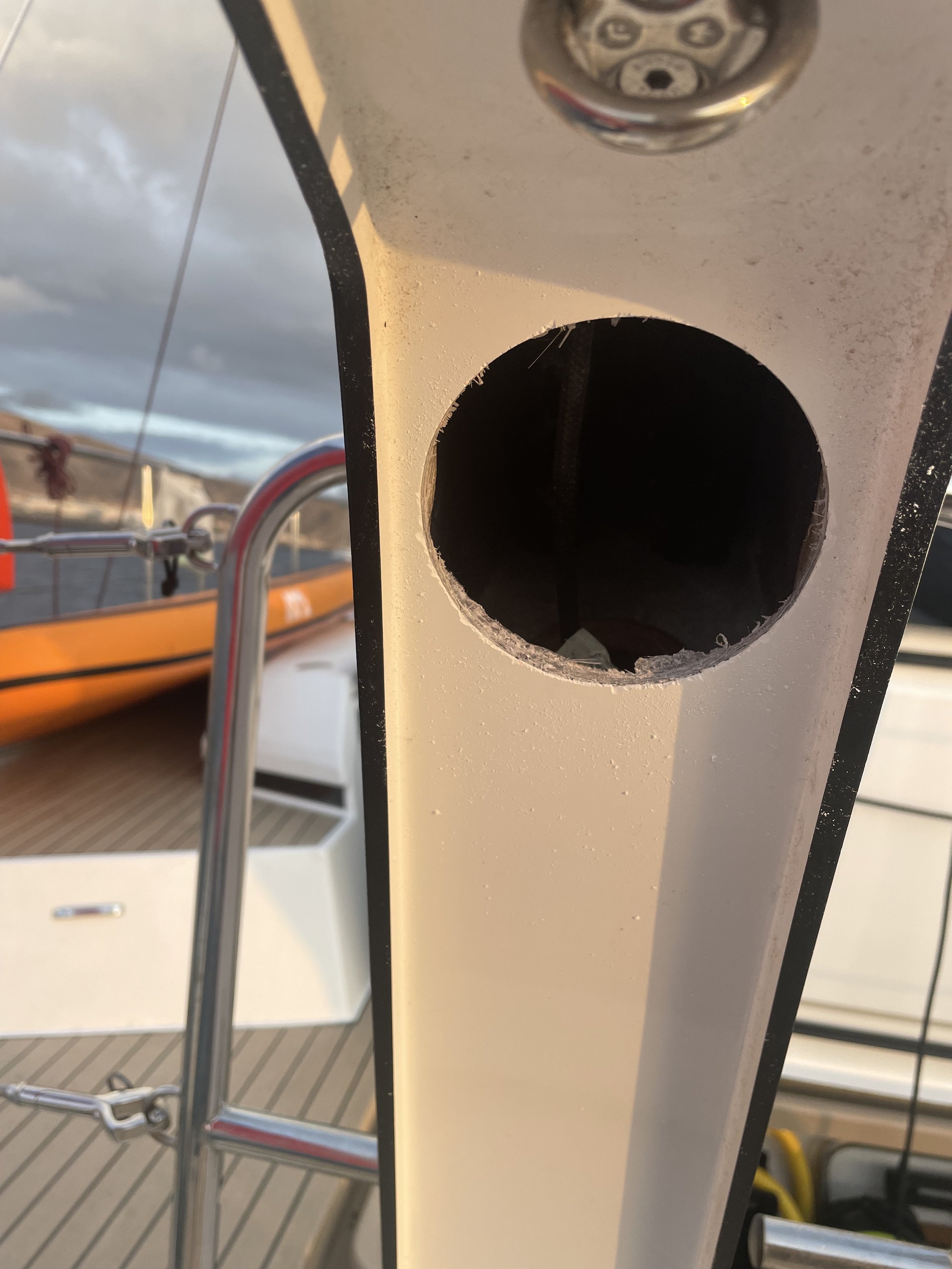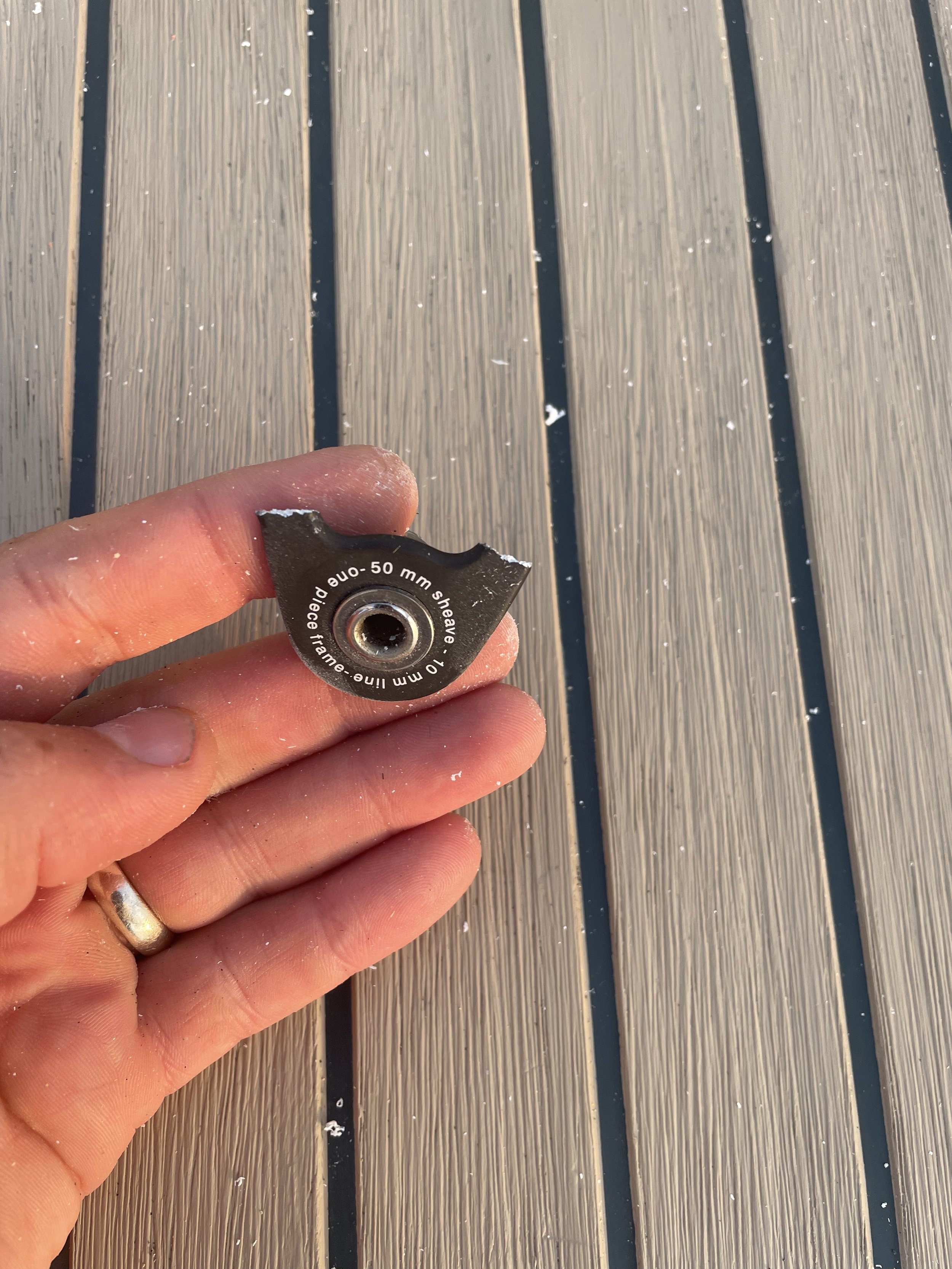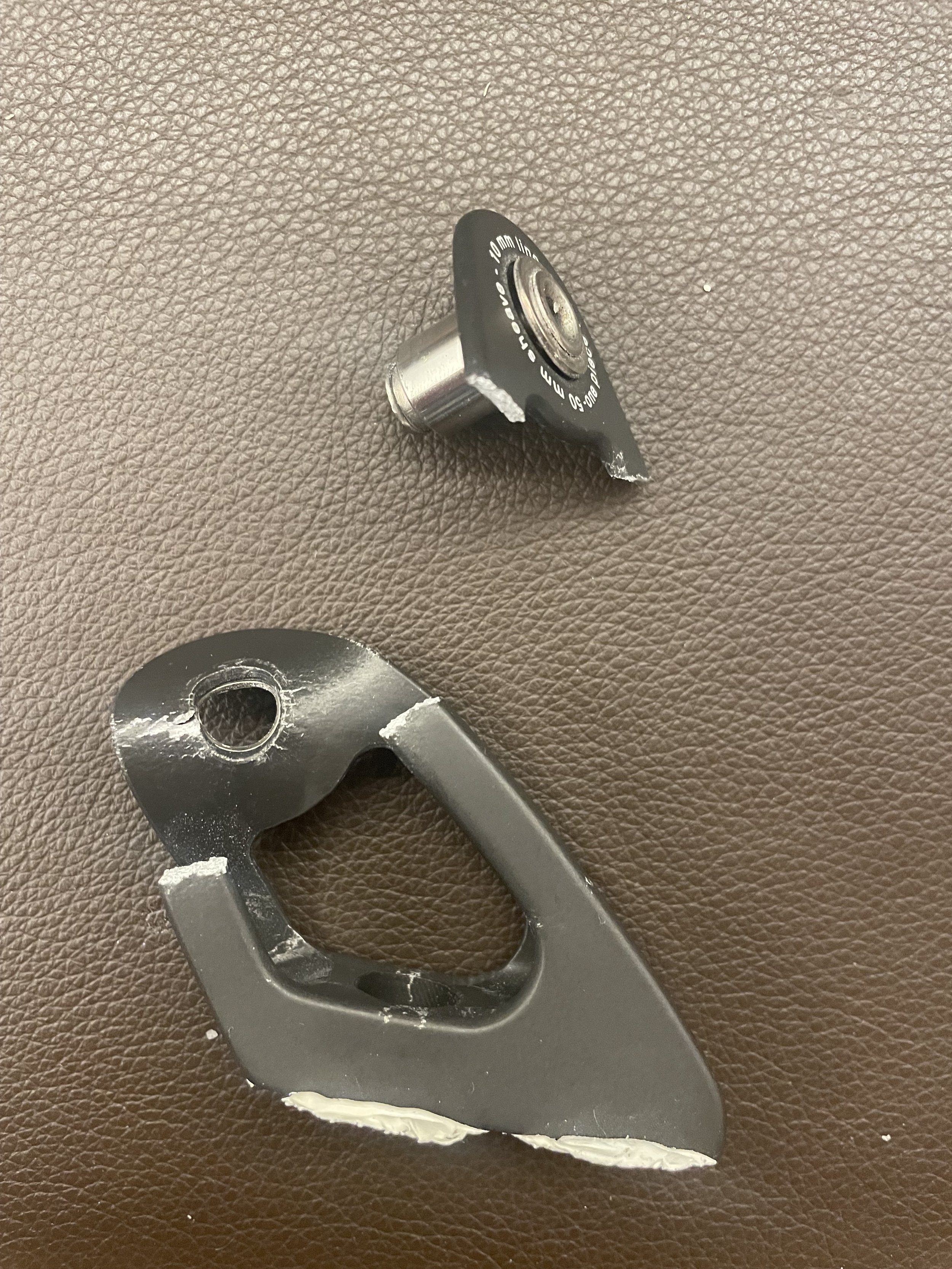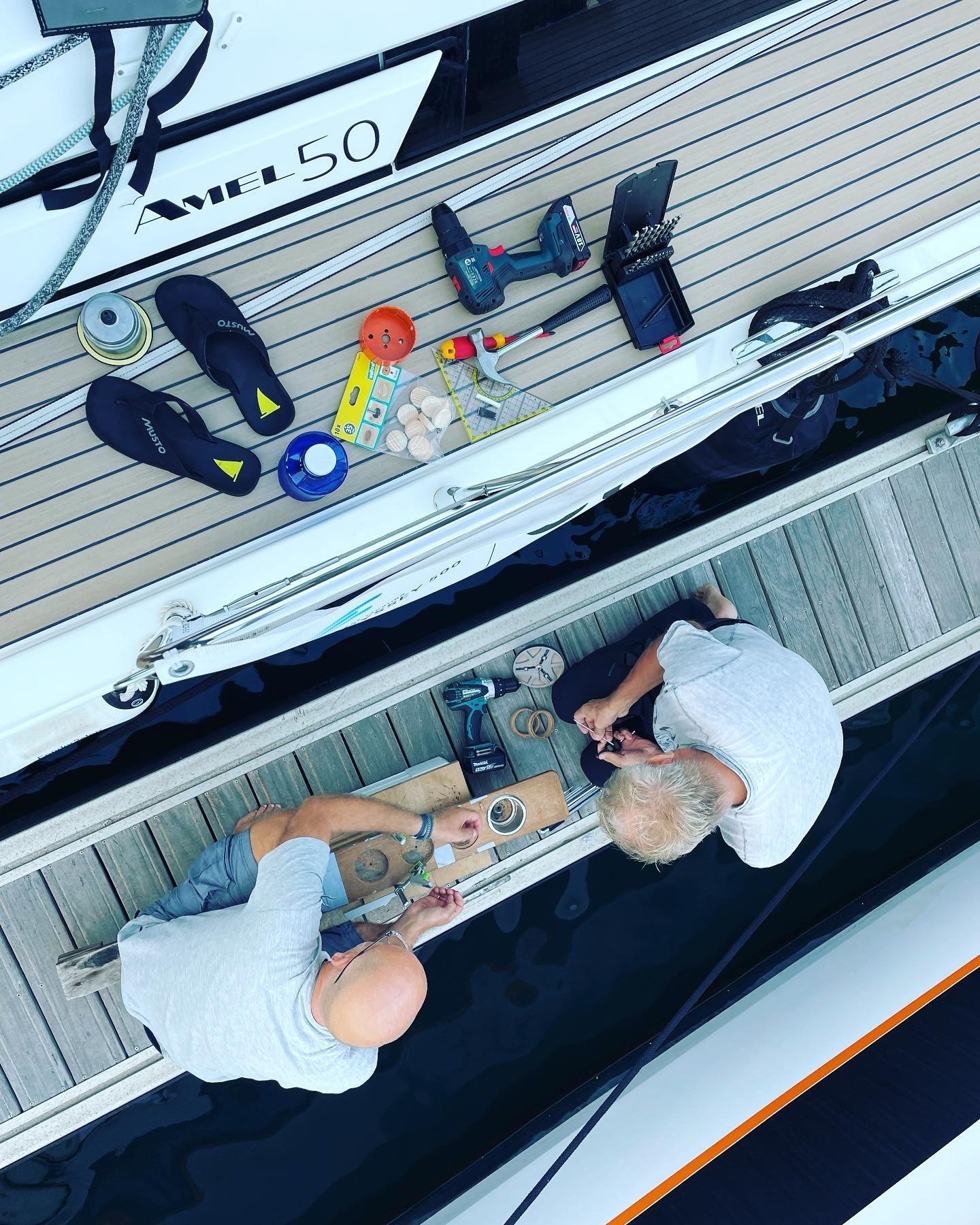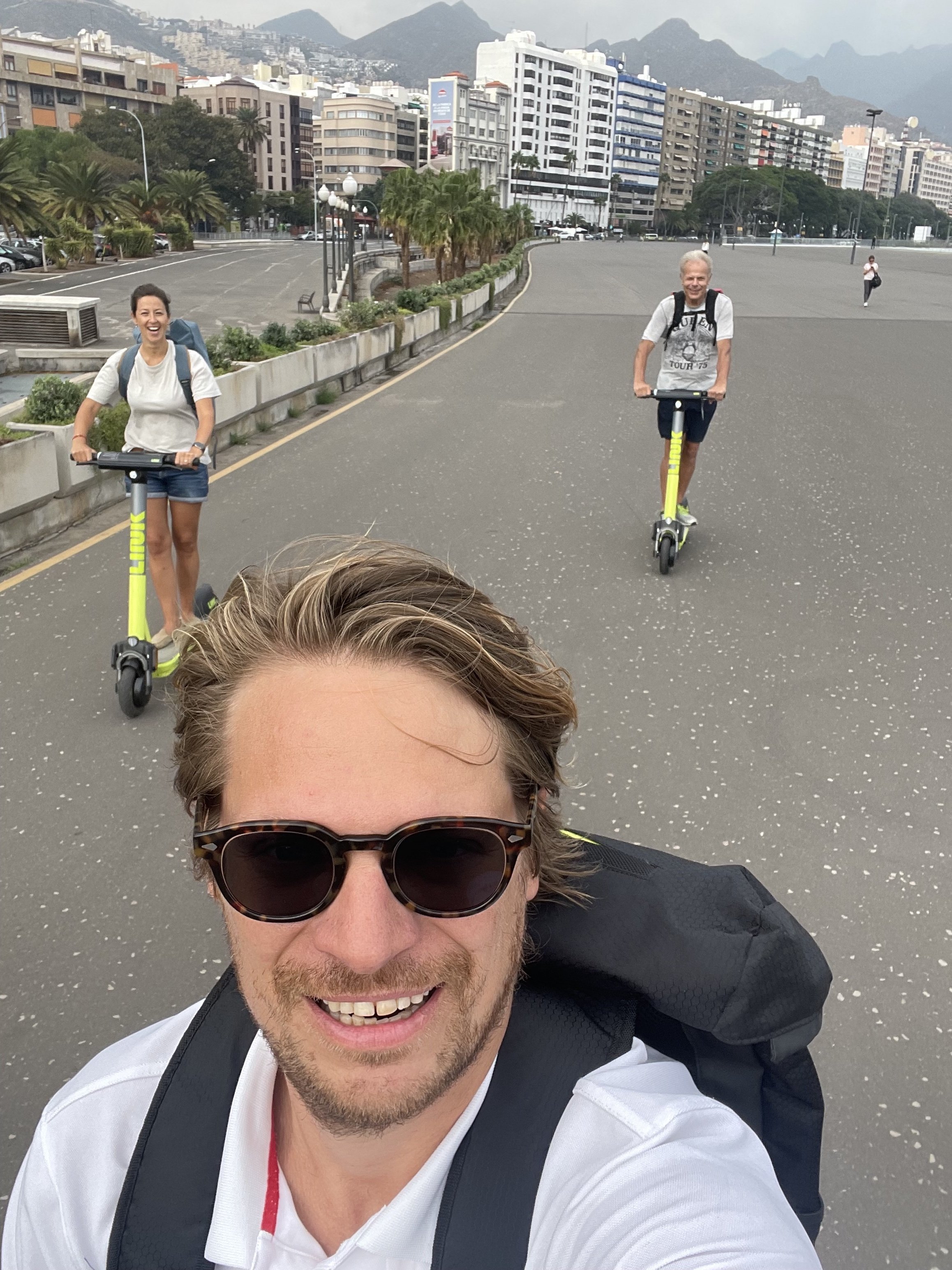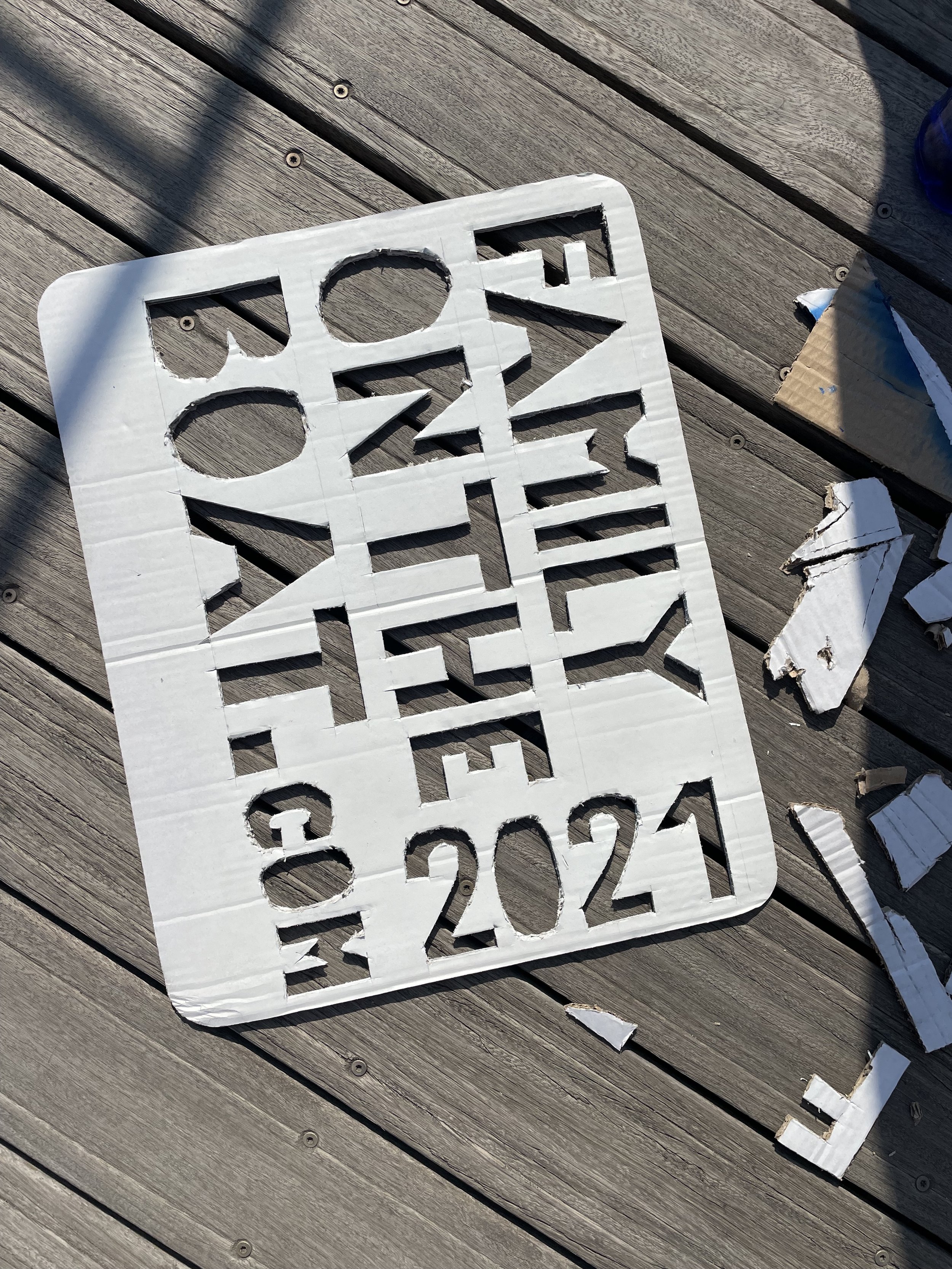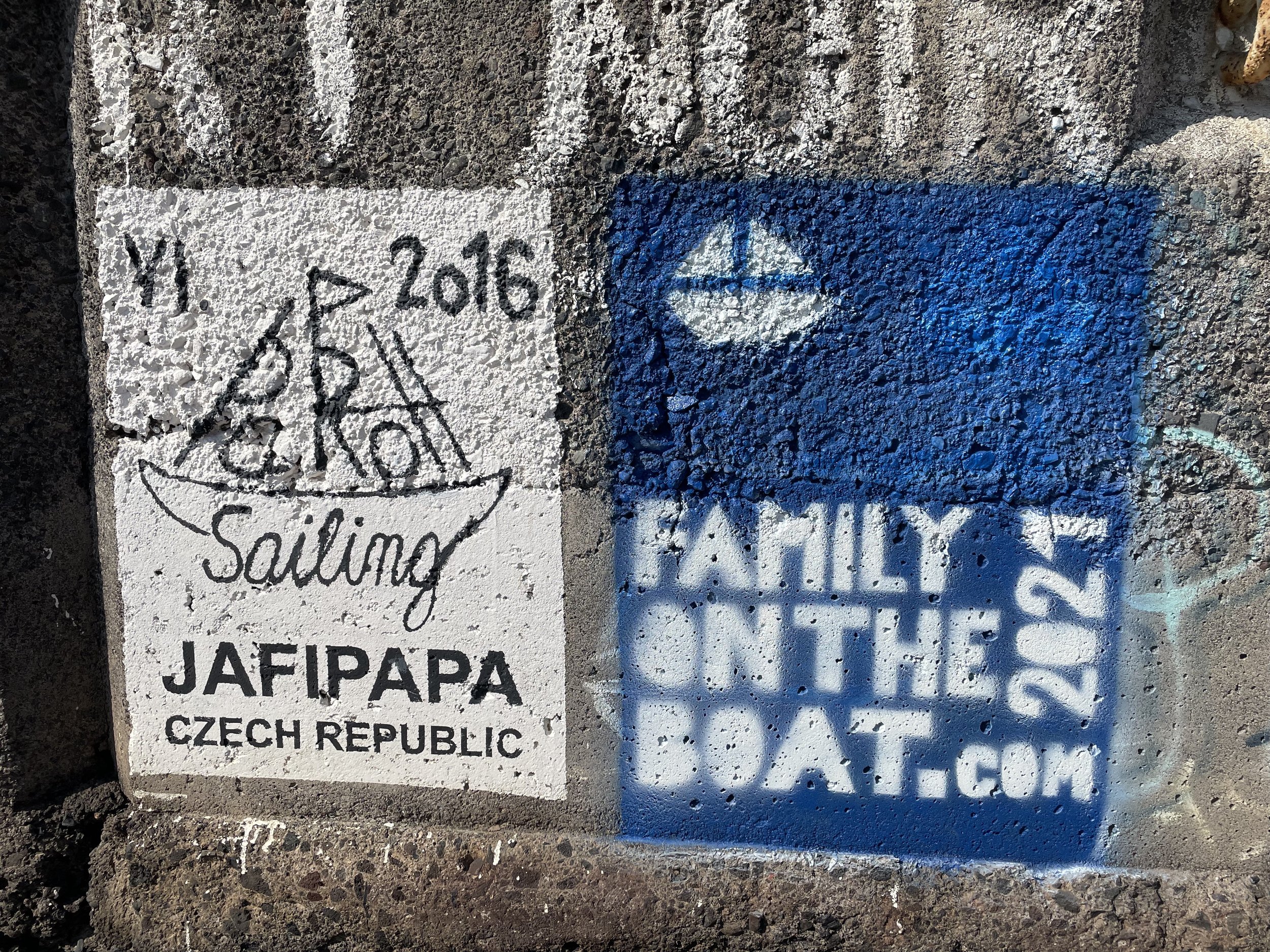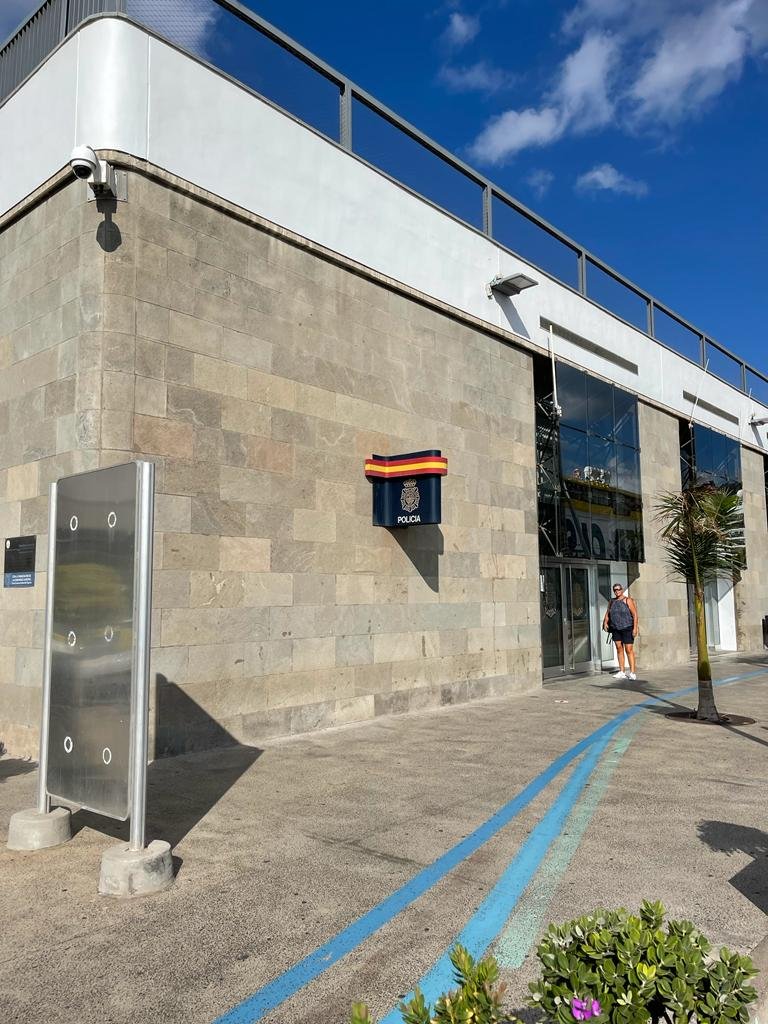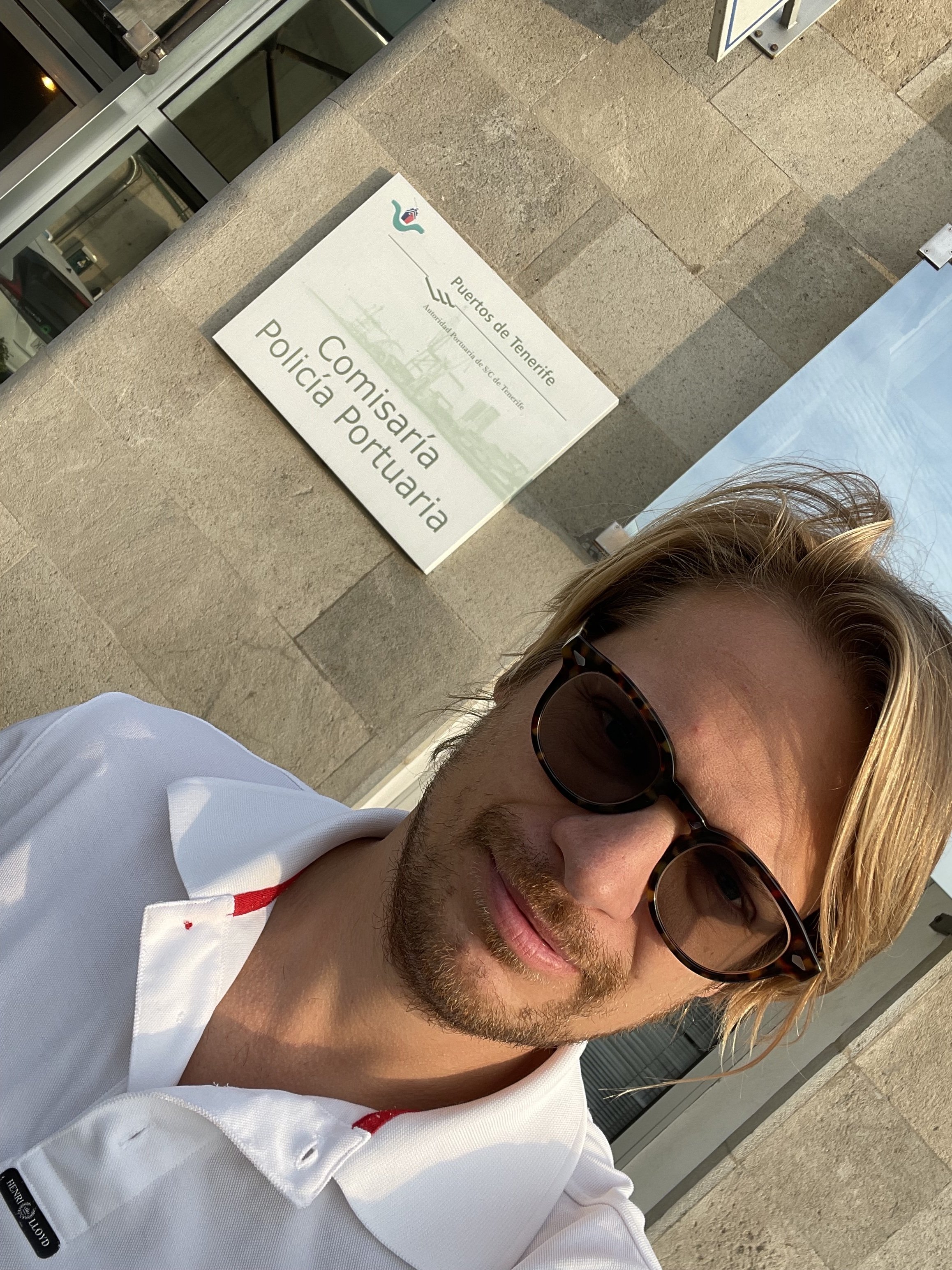Preparations for the Atlantic crossing
The first biggest chunk of water was ahead of us this November - the Atlantic ocean. We needed to sail nearly 3.000 nm which should take us between 18 to 24 days depending on the weather conditions. As a departure point and our base we chose marina Santa Cruz de Tenerife. The plan was to arrive at Barbados.
We spent time before with preparations. To do list was quite long and covered areas of technical checks, safety topics and of course provisioning. Here is what it took us to get ready for the longest sail ever in our lives.
Technical check and upgrades
Our boat has very decent solar panels on the roof of the cockpit. However when we have sails out, they usually shed half of the panels which decreases their efficiency. So for the crossing we got extra solar panel placed at the stern of the boat on the davids for the dinghy. Just a note aside. It sounds like a very ordinary thing. And normally it is. We ordered the spare parts in Spain and ordered shipping to Tenerife. We booked a company to install it once we arrive to the marina Santa Cruz.
But :) But we did not count with the fact, that Canary Islands are no more Schengen and all got stuck in Madrid for customs clearance and despite daily calls with delivery companies we were not able to get it before our departure. So the company we booked for the installation ordered a new panel. As they were Spanish and Canary Islands residents they got it just with small delay so we could get this operation finished. Almost like waiting for parcels in Cadiz :)
To close this task I only add that Michal connected all solar chargers through the Bluetooth to make them communicate together so we do not have too little (batteries too low) or too much (fire danger) voltage!
Second key thing we did was upgrade of the marine software used for voyage planning. Until this crossing we usually used Navionics and simplified Timezero software that is built in our Furuno boat plotter. Timezero is very good for voyage planning and weather routing. Unfortunately our Furuno plotter did not allow us to use the full beauty of this high end software. The plan was to get the full version into captain’s personal laptop. Again, normally it would be no big deal. But as we are an Apple family, we realised Timezero is only for PCs :/ So Michal got Parallels into his Mac. Downloaded Timezero. Not working. After hours of trying to hack it we gave up and got extra PC laptop just for this software.
You might ask why so much hassle. But there is one great advantage that made all the attempts worth it. When on the ocean, yours only connection with the world is a satellite phone. Satellite phone allows you to send and receive simple text messages, emails and most importantly download several kilobites :) Which is exactly how much actual weather forecast weights. During the crossing the plan was to download daily weather forecast through satellite to the PC, feed the Timezero for the weather routing in the laptop and then synchronise it with the boat plotter through boat wifi. How about that :) I think Michal remained IT guy inside.
Third part was the technical safety check of the boat itself and a few more repairs. We had to check the mast and rigging to make sure there are no problems. Also we had to repair gennaker furling and boom kicking of the main sail.
When we were anchoring at Los Cristianos, our davids, that are used to carry the dinghy, broke. More precisely, the system that is pulling the dinghy up broke. We did not have the right spare parts. So Michal had to figure out temporary solution so we can pull the dinghy up and keep it safely on the davids while not causing more damage. He made it with few extra pulleys.
We installed extra boat tracker that the organiser of the GLYWO really is using to keep an eye on the participants while crossing big seas.
Last thing we simply had to do was an upgrade of the cockpit table. On a sailing boat usually you have a foldable table in the middle of the cockpit with several holes in the middle. When you sail, nothing stands, all falls. So you simply put your beer, coke or gin and tonic into this hole. We were 4 adults and have one table hole able to carry a can :( The other 3 holes were simply too small to carry a bottle or can. Can you imagine the fight for the right sized hole! This had to be changed. Michal ordered 3 new big stainless steel holders of the right size and cut bigger holes in the table. What a peace on the boat!
Safety check
There are mandatory safety items you as a captain are obliged to have on the boat and if not carrying them and keeping them up-to-date and in good shape, in case of accident, you can be fined.
On top of these items, we got a list of safety equipment from the GLYWO really organiser to make sure we tick all the safety boxes. Majority of the list we already had. Some we had to get extra. Here are the main items a personal sailing vessel has to carry on long passages:
Self-inflatable life jackets including man over board beacon for each member of the crew
Life raft (A life raft is a usually a big box placed at the bow or aside the railing of the boat so it is easily reachable and releasable to water. In the worst case scenario when you have to abandon your boat, you release this box into the water. It immediately inflates and is able to carry the whole crew.)
2 Safety grab bags - one which contains fresh water, food and basic medical equipment, second that contains flares, GPS EPIRB satellite safety signal, iron saw, emergency horn, portable VHF radio and portable solar chargers. These you take with you when you need to abandon your boat.
Portable VHF antenna for the boat in case you lose mast
Man over board inflatable buoy, 3 meters high so the person is visible in waves
Horse shoe buoy
Safety lines along all the boards of the boat for harness. When sailing you often need to walk around the boat. To make sure you stay on the boat, you use your vest with a special elastic line called harness. You alway clip your harness to these safety lines before leaving the cockpit. When you slip or are smashed by a wave, there is higher chance you will not fall from the boat.
Paper maps in case all electronic devices fail
Provisioning
Last but not least important was the provisioning of food, beverages and hygienic supplies for 4 weeks. We calculated the voyage to take less, but it is advised to stock for longer period in case something goes wrong.
This was a nightmare for me. Our family got used to just in time grocery delivery. If we missed something we simply ordered it online and it came latest the other day. But surprisingly there are no supermarkets neither food deliveries on the ocean.
We knew we had one relatively large freezer and 2 shelves fridge. What does not fit in there has to be dry or long-lasting.
We sit and put down 25 hot meals and 5 cold meals. We also put down all hygienic goods we would need. This was used as a basis for looong shopping list.
In Santa Cruz we borrowed a car. So it was quite convenient to shop and then bring all to the pier. Yet you have to carry and storage every single piece in the boat.
Surprisingly, there was no problem where to store durable goods (pasta, rice, flour, salami, eggs, cans, UHT milk, beer, wine, coke…) But how and where to store fresh veggies and fruits :/ Potatoes and onions were ok. The rest ripen fast. Besides one fruit net in the galley we added one more outside above the dinghy. We put there oranges, apples, lemons, grapefruits and mandarines. We also found relatively good long lasting bread. And we add few panetones :)
Some of the vegetables fit into the fridge besides yoghurts, ham, cheese, pates and drinks. The rest we had to keep outside. We had tomatoes, cucumbers, peppers, cabbage and lettuce. We just prayed it will last as long as possible.
The rest were cans or glasses of peas, corn, beans, chickpeas, marmelade, tuna, anchovies. We made also 2 special lockers - for bad weather and for night watches :) One locker contained salty snacks - crackers, chips, grissini, salami or salsichons. The other locker contained sweets - biscuits, chocolate bars, gummy bears, dried fruits and nuts. So when someone was hungry or needed a boost of energy, it was easy and reachable for anyone to grab.
We also provisioned for hygienic stuff like toilet paper, washing liquids, paper towels, etc.
We did one big shopping 4 days before planned departure. Then everyday we always realised we miss something or it would be good to have more. So anytime anyone went to the town, he came with bags of extra provisioning. The longer we would stay in marina, the more we would keep shopping :)
Our crew
The base crew was clear - Michal as the captain, Pavla as the service man and Adinka and Hugo as cadets. As this was our first ocean crossing we were very happy when Pavla’s mother Edita and her partner Jarda confirmed to join us for the voyage.
It is not easy to chose the right crew for so many weeks. You stay on very limited space without option to leave. We were lucky we sailed together before In Italy and Greece. Jarda is also a captain with many years of experience. They were able to leave the work for so long. We probably could not do a better choice.
Mental preparation
When you read about ocean crossings, there are various experiences. Someone had calm ocean, someone had crazy waves. Someone had easy sail and someone was repairing something constantly. What unites all experiences is that the most important thing on the boat on such voyage is to keep a good mood. Ok. But how you gonna do that, right?
We prepared for hours of sailing when you need to keep yourself (and the kids!) busy. We downloaded many audiobooks. Kids got 2 ukuleles ;) We had many movies on the hard disk too. Many board games, card games. We got beer, wine, gin. There was probably nothing more we could do, just go.
Final preparations
When you sail, you are always healing towards one side. This means objects tend to fall down or slide on the floor, including you :) So we also prepared the boat inside.
Our beds are equipped with foldable lee cloths and adjustable boards you install when expecting sail overnight. This does not prevent you from sliding constantly on the bed but it prevents you from final falling down.
We also revised all cutlery, free standing objects, cans, etc. to make sure it will not make noise or will not fall or slide inside of the boat.
We put down the table in the saloon, add cushion there and made it a big bed for nightwatches. We also washed all the clothes and bed sheets to have as little washing as possible.
Throughout our stay in Santa Cruz marina we saw few other ships getting ready for the crossing - climbing up the mast to check it, getting boxes of food delivered at the ship and storing it inside.
We also witnessed various people coming to the marina and looking for a ship that would take them to the Caribbean. They would work along the passage as cleaners, chefs, etc. Well, our crew list was full.
There is also a habit of leaving a sign on a marina wall when you go across the Atlantic. The wall was pretty busy with many paintings. We did not want to cover anyone’s drawing not to bring us bad luck. Luckily we found a place and paint our “Family on the boat” there too, We had to leave this mark :)
Finally the day came and we were ready to set off. As we were leaving the Schengen, we had to go to customs and immigration office to check out the boat and its crew. We also sailed to a petrol station to get full tank of diesel for the generator.
We waved to Pavla’s brother and his family, making noise with horns while leaving the marina. Having 3 weeks of the ocean (if we are lucky) ahead of us.
How we managed the crossing will follow soon. Obviously we get across and are finally enjoying the rewards of the end destination, Caribbean.
